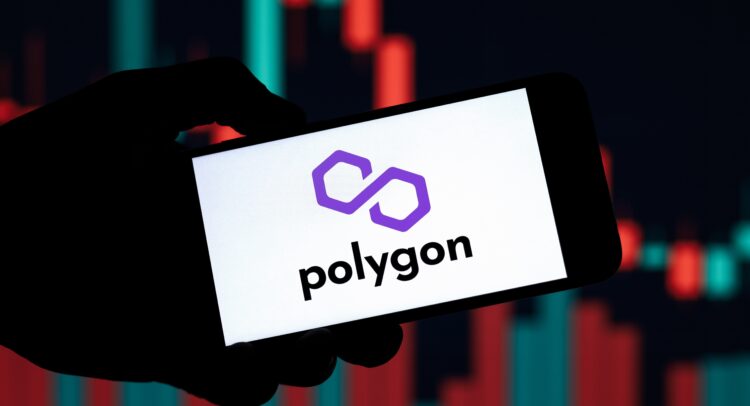The rise of Polygon (MATIC-USD) has been a remarkable thing to watch. Born as an Ethereum (ETH-USD) scaling solution in 2017, Matic, as the network was then known, was the brainchild of data scientist Jaynti Kanani, blockchain developer Sandeep Nailwal, and business consultant Anurag Arjun.
Elevate Your Investing Strategy:
- Take advantage of TipRanks Premium at 50% off! Unlock powerful investing tools, advanced data, and expert analyst insights to help you invest with confidence.
What started as an attempt to ease Ethereum’s notorious bottlenecks and rising fees slowly morphed into a bona fide ecosystem in its own right. In 2021, Matic rebranded as Polygon to reflect its new direction, even if the token retained the original name. Over the next 12 months, the MATIC token increased by multiples as money flowed into the new-look Polygon network, which was quickly becoming a hub for gaming, trading, yield farming, and NFTs.
Since then, a business development team routinely cited as the best in the industry has seen Polygon ink partnerships with the likes of Nike (NYSE:NKE), Meta Platforms (NASDAQ:META), Starbucks (NASDAQ:SBUX), and Disney (NYSE:DIS). It’s also become a hub for Web3 innovation, onboarding scores of smaller projects such as Wakweli, whose NFT certification system is debuting on Polygon.
Meanwhile, Polygon’s development team has released the zkEVM, a new Ethereum-adjacent network that makes use of zero-knowledge proofs, a technology that supports greater privacy, faster transactions, and ultra-low fees. Whatever way you slice it, Polygon is an ecosystem whose star is in the ascendancy.
MATIC’s Metrics
The metrics corresponding to network usage are extremely positive for Polygon. With over 340,000 active users across the 400-odd protocols deployed on the network, it almost outstrips Ethereum. An impressive $1.1 billion is locked into various DeFi protocols on Polygon, providing deep liquidity and servicing the needs of decentralized finance users, from retail to large funds.
When the first flurry of activity on the newly-rebranded Polygon network began in 2021, its native token responded strongly. MATIC climbed from $0.04 at the beginning of that year to a high of $2.59 by May. At the start of 2022, MATIC reached an all-time high near $3.
Fast forward to 2023, and Polygon has put distance between itself and other Ethereum scaling networks. It’s ahead of Avalanche (AVAX-USD), Arbitrum, and Optimism on almost every metric of significance. Yet, it’s impossible to ignore the fact that the MATIC token has responded relatively sluggishly. While MATIC is up 44% for the year, bitcoin (BTC-USD) is up 81%, and Ethereum is up 55%. So, why is it underperforming?

Understanding Polygon’s Underperformance
Polygon is not in the business of shilling its token, nor does it need to. The EVM chain – two chains, in fact, now that zkEVM has launched – has enough compelling use cases and applications to tempt would-be developers, from small GameFi companies to global corporations. The MATIC token, which is staked by validators and used for gas fees on the network, does the job it was designed to do.
It’s safe to say the Polygon team is losing no sleep over the unexceptional relative performance of its native token. If MATIC has been slow to respond to the constant drip of positive news emanating from Polygon HQ, that says more about the latter’s strength than it does about the former’s weakness. Or, to put it more simply, build great things, and the price will follow.
One of the reasons why MATIC has not set the crypto world on fire, even as its network has been going great guns, is simply a reflection of market cap. With a market capitalization of about $10 billion, Polygon is worth almost seven times more than Arbitrum, whose token launched in March. MATIC has already undergone its price discovery phase through 2021 and is currently a top 10 crypto based on market cap. Therefore, there might not be much more room to grow.
At least, that’s the bearish take. The bullish take on MATIC goes like this: Polygon already has more users and network activity than Ethereum – and that’s not including the zkEVM that’s just launched. MATIC is currently trading at around $1.09 per token. Polygon’s data points, from daily active users to the number of projects building on it, have increased by multiples over the last two years. So, it’s not a stretch to see MATIC regaining its previous all-time high set in 2021 and pushing on from there.
While traders debate the case for and against MATIC as a sound investment, Polygon is focused on doing what it does best — business, building, and onboarding. With new app-specific sidechains, a shiny new zkEVM to put through its paces, and more onramps to unveil, Polygon’s ecosystem is just getting started.
















